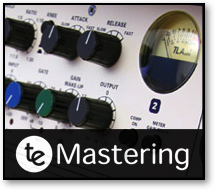





These production tips and tricks are designed to help you make the most of your music. Covering everything from mic technique to post-production, we hope you find them useful.
If there’s a topic you’d particularly like to see covered then please feel free to get in touch




Industry news, useful links and what’s going on at Tenth Egg
© Tenth Egg Productions 2008




A different approach to music production.

music mastering

Tips and tricks from our engineers to help you with your music making



A good set of headphones is undoubtedly an essential bit of kit for any serious music maker. An invaluable tool during recording they can also prove useful in post-production, revealing bad edits and problems in the stereo image that might slip through unheard on speakers. In many ways, for the producer on a budget, headphones seem like the ideal monitoring solution: a good pair of headphones costs considerably less than a comparable set of speakers and you don't have to worry about the acoustics of the room or sound leaking in or out. But before you run off and stick your studio speakers in the local classifieds it's worth being aware of some of the issues surrounding headphone monitoring.
To demonstrate the essence of the problem why not try this simple exercise for yourself: next time you're part way through working on a track, switch from listening through speakers to headphones. What you'll probably find is that the effect is quite disorientating and that you'll immediately question some of your mix settings.
Tip 12 : Mixing on Headphones





What do we use?: Our location engineers favour the Beyerdynamic DT150 which offers excellent sound isolation, great build quality and is eminently repairable (if not offering the most accurate of bass end). And in the mastering studio we're keeping it in the family with a pair of Beyerdynamic DT 880 Pro's
Want more? Read all our production tips at: www.tenthegg.co.uk/tips/archive or subscribe to the RSS feed to get new tips direct to your desktop: www.tenthegg.co.uk/tips.xml
The fact is that the two provide a very different listening experience. When listening through speakers sound from an individual speaker will reach both ears, bouncing off walls or other surfaces within the room, so you end up hearing a bit of the left channel in your right ear and visa-versa. But when listening on headphones none of this cross-talk between left and right channels can occur as the sound is piped directly into each ear.
This has implications for the stereo image and you'll probably find that the spread of your mix doesn't quite match up between the two. There isn't really a work-around to ensure that a headphone mix sounds right on speakers, except to pan by eye rather than by ear and get used to where to place stuff to get the right results. Working the other way, a common recommendation to help ensure that a mix translates better to headphones is to to avoid panning elements to the extreme left or right, as these can end up sounding 'stuck' in one headphone.
But the differences go beyond stereo image. When listening on speakers the result of hearing both direct and a delayed (cross-talk) versions of the sound is that a degree of phase cancellation and masking can occur as the two mix, changing the original sound. However, when listening with headphones because we receive only the direct sound in each ear the same masking effects won't be present and this can lead to very different decisions about EQ and even the level of elements within a mix. Again the solution is more a case of trial and error than any particular rules you can follow.
Low frequencies seem to cause the most trouble when it comes to mixing. Part of the problem is that headphones don't allow us to physically feel the bass as we do with speakers, and this and can lead to over hype it. The other part is that a lot of headphones (even some quite expensive models) don't have a very accurate bass end either peaking around certain frequencies or being overall lacking. In general open back models will offer a flatter frequency response, but at the cost of sound isolation.
A benefit of the plugged directly into your ear approach is that headphones can be capable of revealing details in a mix such as bad edits and other noises that might otherwise be missed. Engineers often talk of headphones allowing them to 'see through' a mix. But this clarity can have a down-side when it comes to judging the level of reverb that's appropriate. Reverb will tend to be more apparent and this can lead us to create mix that sound quite dry on speakers.
Having said that headphones present a very different listening experience, much of the general guidance for monitoring on speakers still applies, such as listening at a safe and consistent volume level. Resisting the temptation to gradually increase the volume over the course of a mixing session is important not just to protect your ears but also to maintain a realistic impression of your mix. Because of the way the human ear works, variations in volume affect the apparent tonal balance of what we hear. Monitor too low and your mix will appear lacking in top and bottom end, listen too loud and it'll seem like there's extra bass and treble energy - either of which will affect your decisions about balance and EQ. 85dB spl has become the de-facto standard in studios as the most appropriate listening level, as it is where our hearing exhibits the fattest frequency response. If you have a SPL meter then calibrating your monitors is relatively straight forward, but headphones aren't as easy. Our advice is to work at a normal listening level and if in doubt err on the side of caution. And just as the position of speakers in a room is important so is the position of headphones on your head. By even slightly changing the position of headphones on your head you can radically alter the tonal balance. Find a position that comfortable with the headphones centred on you ears and stick to it.


Headphones or Speakers? : The two can provide a very different listening experience due to the way in which they deliver sound to the ear; headphones more or less direct and speakers through the acoustic of the listening room.
The accepted norm amongst engineers has always been that you mix for speakers and fix (if checking at all) for headphones, because the former is how most people listen to music. But with the iPod generation increasingly plugged into their white earbuds it is arguably increasingly important to consider how a mix will transfer from speaker to headphone. And as with almost everything in music production, no single piece of kit provides the whole solution. Just as we don't entrust all our recording to one microphone, or all our eq'ing to one plug-in or hardware unit, so we don't want to put all our eggs in one basket when it comes to monitoring. Whichever listening gear works best for you, it's a good idea to take the time check your mixes on the other, the result will be better mixes and happier listeners. £200 which will buy you a reasonable pair of studio monitors will certainly get you a very professional set of headphones, and if you're a bedroom or mobile musician then that could be the better investment. The most important thing is to get to really know your headphones.




iPod Generation?
If most consumers are now listening to music through headphones, maybe as engineers we should think about changing the way we work in the studio to give greater consideration to how a mix will transfer.


